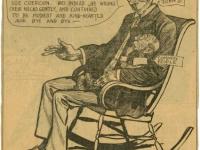This interdisciplinary lesson plan is focused on political cartoons as a way to teach economics and the Progressive Era. The cartoons range from late 1880s to the 1912 Presidential Election, and a PowerPoint is included with background knowledge for students and teachers on the Progressive Era that works in conjunction with the cartoons. These cartoons depict several events from the time period with differing opinions. Students will be asked to analyze the cartoon to discover the author’s point of view as well as place the cartoon with background knowledge of the era. Students will also be asked to compare and contrast the cartoons to form a well-rounded opinion of the popular culture shown through the cartoons.
Drawing on a variety of sources helps students generate their own opinions and enhance their knowledge of the subject while having exposure to primary sources. It will also increase their literacy skills by improving their critical thinking ability.


